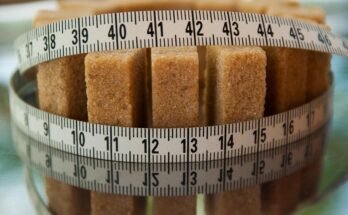Human beings remain less active in modern times which produces stiffness combined with poor posture alongside limited mobility. Our bodies originated to conduct natural movements that include running, jumping, crawling along balancing. Natural movement exercises help restore these essential motions, improving strength, flexibility, and overall well-being.
Whether you’re a natural movement beginner or looking for natural movement exercises for seniors, these simple techniques can be adapted to your fitness level. Integration of movement activities must become central to your regular activities beyond conducting gym-based exercises.
Here are 10 essential tips to help you incorporate natural movement exercises and solutions into your routine effortlessly.
Read More About Weight Loss Here
1. Start With Simple Movements
If you’re new to natural movement exercises, don’t overcomplicate things. All exercises for beginners should include basic Steps like squatting and walking together with reaching and crawling. Human motion bases itself on these vital movements which restore our ability to move.
You should replace the notion that exercise stands apart from everyday activities by incorporating natural movement into your everyday routine. Use floor space instead of couches use stairs instead of elevators and perform one-footed operations during tooth brushing.
2. Focus on Mobility Before Strength

Strength training too early after starting a fitness routine should be avoided due to the priority of performing mobility training first. The stiffness of your physical structure will force improper muscle activation that raises your potential for muscle tears or tears.
Your joint flexibility will improve through holding deep squat positions and performing shoulder rotation motions along with hip circles. Spend several seconds each day hanging from a bar to build your grip strength and shoulders become more mobile.
3. Walk More—And Walk Differently
Walking as a movement naturally occurs in humans yet decreased walking due to contemporary life patterns. Change your perspective about walking away from simple transportation and transform it into a purposeful daily practice.
Change your walking surfaces by walking across grass areas, sand, and unpaved terrain. Walking barefoot is recommended to build foot muscle strength at all times when possible. Your body needs different terrain as you walk since this exercise engages many muscles and enhances your balance capabilities.
4. Incorporate Crawling for Core Strength
Crawling is one of the best natural movement exercises for building core strength, stability, and coordination. The therapeutic movements aid in returning body control and correct posture to its optimal position.
Move in a standing crawl position by transitioning between forward and backward motions while holding yourself up on your hands and knees. Try performing a bear crawl as your knees should hover above floor level.
5. Your Surroundings Serve as an Excellent Workout Facility
You don’t need expensive equipment for natural movement exercises. Your current environment includes many natural scenarios that you can use for body movement.
Make use of available tree branches to hang from and utilize park benches for stepping up and wooden logs to balance. Use natural outdoor areas to combine jumping motions with climbing activities while doing squat exercises and stretching movements.
6. Practice Deep Squatting Daily

Squatting at depth was once a common relaxation posture in traditional societies until modern society adopted seating furniture instead. The practice of deep squatting provides positive effects on hip flexibility in addition to muscle development in the legs and helps stimulate digestive processes.
Devote yourself to deep squat position exercises during a few minutes of daily practice. Use support to balance yourself if you find the position hard to maintain. Continuous practice will lead to better mobility and performance.
7. Improve Balance Through Play
The element of balance serves as an important component of movement since it tends to deteriorate with advancing age. Accomplish balance stability by attempting recreational activities involving one-legged stance curb walking and slacklining.
Natural movement exercises for seniors often focus on balance training to prevent falls. Walking movements between your feet can actually strengthen your stability performance.
8. Breathe Properly While Moving
Breathing deeply and rhythmically is essential for natural movement exercises. People commonly restrict their breathing during physical activities which decreases blood oxygen flow and produces more difficulty while moving.
Nasal air intake should be the primary method of breathing while performing exercise. Match your breathing to your physical movements through a method like extending your body during inhaling then contracting it while you exhale.
9. Make Movement a Daily Habit
Workouts should not be scheduled in blocks of time as you can distribute your exercises throughout your daily activities. Brief stretching sessions should be taken during your day while you should stand periodically instead of sitting during prolonged periods and seek novel ways to move your body.
Natural movements divided among different periods during your day offer better benefits than one intense workout followed by long inactive periods.
10. Have Fun With It!
Joyful engagement serves as the most effective approach to establishing movement as a regular habit. Active engagement through natural playful activities will help you maintain your daily motion such as hiking or dancing or playing with children. Fun activities lead people to maintain their fitness routine.
FAQs
What are the 7 natural movements?
The 7 natural movements are:
- Walking
- Running
- Jumping
- Crawling
- Balancing
- Climbing
- Lifting/carrying
Such movements represent what our bodies evolved to perform naturally.
What is natural movement training?
The fitness method of natural movement training concentrates on teaching functional real-life activities instead of single exercises in isolation. The training program features these activities: walking, running, jumping along squatting while adding climbing movements for improving strength with greater mobility.
What actions allow me to use my body in its natural sense?
Your natural movement becomes possible when you increase physical activity throughout the day. Exercising naturally means walking more, using seating surfaces, performing squats, balancing, and utilizing available surroundings for workout routines. You should minimize periods of staying seated while making sure your body performs different movements during the day.
What stands as the ultimate exercise that comes from nature?
Walking alongside squatting along with crawling and climbing constitute several exercises which lead to excellent results for overall health. The success factor remains in constant movement together with multiple motion patterns.
Final Thoughts
Incorporating natural movement exercises into your life doesn’t have to be complicated. People should begin with little steps while being active during everyday activities and discover enjoyable movement methods. Whether you’re a natural movement beginner or looking for natural movement exercises for seniors, these tips will help you regain mobility, strength, and flexibility in an enjoyable way.




